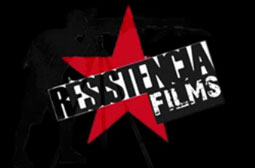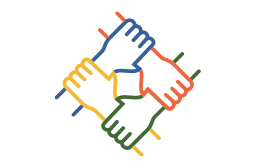Who are you? What is your relationship with the field of cinema, journalism and social activism? (00:23)
Alex, you’re an activist, journalist and filmmaker. As a filmmaker you have done Tomad nuestra voz en vuestra gargantas (2017, “Take our voice and make it your own) y Represión Un arma de doble filo (2015, “Repression: A Double-Edged Sword”). Can you tell us about the origin of these projects and their relationship to your own development as a filmmaker? (02:13)
Where have they been screened? (6:34)
Isn’t it contradictory to use a YouTube channel to deliver activist content? (07:42)
How are these types of projects subsidized? (08:31)
What thoughts come to mind when thinking about independent cinema? From your point of view, what are some of the pending subjects? (9:37)
15M has signified a moment of reorganization, (re) invention, strengthening or contribution to the experience of many of the groups with whom I have spoken to. What has 15M signified for “Resistencia Films”? (11:39)
In the field of media, you are known above all for founding Resistencia Films. What type of channel is it and what is its legal entity? (14:31)
Resistencia Films started in 2014, and as you’ve explained at an intervention in the European Parliament, you try to “give voice to the problems we have in Spain and to the people who have been silenced through repression.” Can you explain these problems? What people have you given voice to with your camera? (15:56)
Resistencia Films is a political project. What type of politics are we talking about? (17:56)
In some way, Resistencia Films is an anarchive of materials that you’re compiling. How is the theme of copyright and user rights managed in the channel? (19:01)
Do you work by yourself or with others? (19:35)
Why is it challenging to do collaborative work, dealing with similar issues? (20:40)
Thinking about the contents of your materials, would you say that Resistencia Films falls under the field of informal education? (21:50)
Thinking about formal education in the cinematographic field and in relation to all the other themes you discuss in you channel, what would you say are the obstacles or unresolved issues in this educational model? (22:56)
Have you received any invitations from formal education settings to talk about your works? (26:11)
Considering that you now upload your content in a YouTube account and that social media is changing, especially in moments of political discontent and learned helplessness, in big trash piles of complaints, rage and indignation, do you believe that the media diffusion of a culture against the prevailing circumstances is capable of provoking concrete actions? (26:54)
On July 28, 2017, you were summoned to the National Court for possibly committing the crime of glorifying terrorism. In particular, it seems that you were accused of “guilt by association.” Can you explain what this expression refers to and how it connects to the alleged “glorification of terrorism”? (28:09)
What specific material is being denounced? (31:38)
Because of this act, you faced two years of prison, 10 of complete prohibition from continuing your video work and a €2,400 fine. Can you describe what the process of your case has been? What has been the result in legal and personal terms? (32:27)
I have listened very carefully to the summary of cases of repression that you list in your intervention at the European Parliament. Based on these cases and your own experience with Resistencia Films, what is your reading of the history of political repression in this country? (35:46)
How many similar cases do you know of and what seem to be the accusations made against them? (38:41)
What are some indicators that we can observe in the Spanish State that speak of the culture of political or thought repression? (40:50)
From your own perspective, do you think freedom of expression exists in the Spanish State? (42:29)
The silence of activist collectives in the Spanish State seems to be accentuated by the Gag Law. For people who are not familiar with this country, can you explain what the Gag Law is and what impact it has today in the activist, journalistic and film field? (43:05)
From your perspective, is there “revolutionary” art? What would your description be? (45:39)
Bearing in mind that we live in a society of images and the market of images, what can an image be, according to your own practice as a filmmaker? Or around the same, how do you fight an image with another image? (46:48)
Taking into account the climate of general political discontent and your own discontent after your recent experience with the judicial system, how do you maintain hope? (47:59)

At the beginning it was a way of practicing with my camera and contributing something to the movements that I worked with, as an additional tool for those movements. Afterwards, gradually, I started to become more known amongst social movements and people started asking me for help, and then it became a more serious channel. At the beginning it wasn’t an idea of being a project, I simply went around without getting involved in larger projects. There are many problems in Spain. In Resistencia Films, I focus on problems related to living conditions, labor conditions, and cuts to health care and education, as well as repression, which is an area that the channel has focused a lot on since its origin, because I think it is an issue that is little talked about. In the end, the fight against repression is a fight for all other causes because, if we don’t fight against it, we are also losing our right to fight against those issues. I think repression is an issue transversal to all other issues, which is why I have focused so much of my work on denouncing it. I also give voice to the participants in social movements whose plights are not listened to and to people that suffer repression by the state because these are the people being silenced and isolated, so it is not known why they are fighting or who they are fighting against. These people are an example for other people who are also struggling and that awareness promotes further resistance. That silencing and isolation is what the channel is trying to stop.





